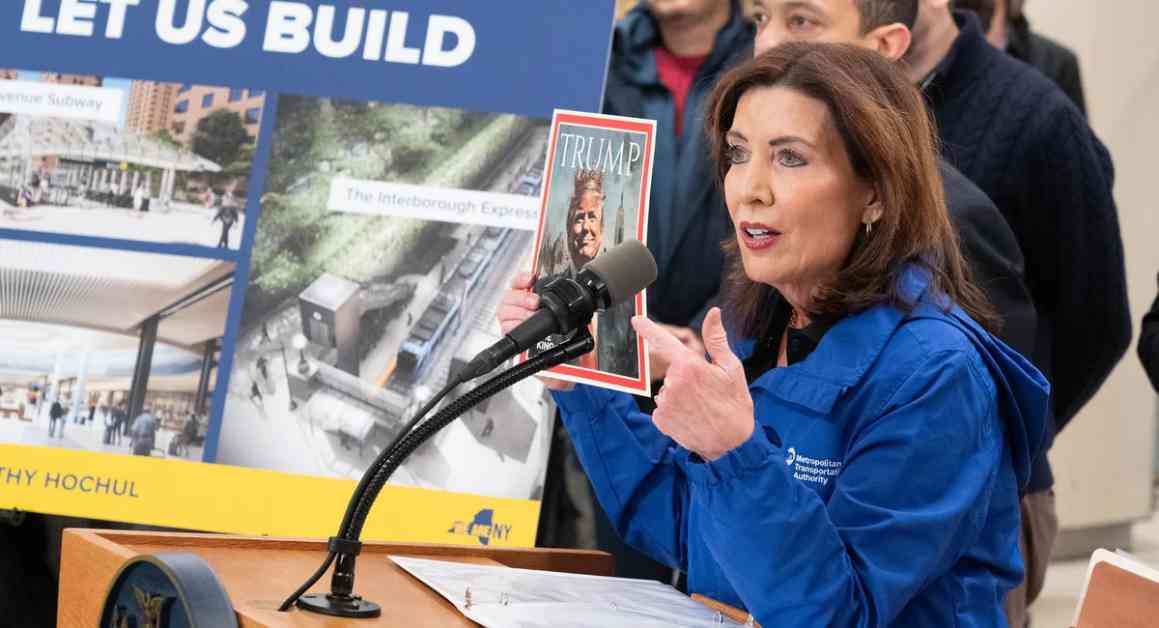President Trump’s recent decision to revoke the MTA’s congestion pricing tolls in New York City has sparked a contentious legal battle that could have far-reaching implications for transportation in the state. This move, outlined in a letter from U.S. Transportation Secretary Sean Duffy to Gov. Kathy Hochul, comes after the Federal Highway Administration withdrew its approval of the tolls, which have been in effect since January 5th, charging drivers $9 to enter Manhattan south of 60th Street.
The MTA swiftly responded to this order by filing a lawsuit and declaring its intent to continue collecting the tolls until directed otherwise by a federal judge. The agency is bound by state law to utilize the funds generated by the program, totaling $15 billion, for crucial mass transit repairs. Despite the legal challenges ahead, MTA Chair Janno Lieber expressed confidence in the program’s viability during a recent press conference, citing past court victories over similar disputes.
Legal Implications and Challenges
The crux of the legal dispute revolves around whether congestion pricing falls within the purview of the Federal Highway Administration’s “Value Pricing Pilot Program,” a mechanism that permits states to impose tolls on federally-subsidized roads to alleviate traffic congestion. Duffy’s contention that the program is ineligible stems from its broad application across much of Manhattan, rather than targeting specific roadways, along with his assertion that its primary objective is revenue generation for the MTA.
In response, the MTA’s lawsuit challenges the federal government’s authority to unilaterally terminate the congestion pricing program, arguing that it violates established federal statutes and encroaches upon the agency’s constitutional rights. This legal showdown highlights the intricate balance between federal oversight and state autonomy in implementing transportation policies.
Eric Goldstein of the Natural Resources Defense Council, a staunch supporter of congestion pricing, criticized Duffy’s rationale as legally unsubstantiated, emphasizing the rigorous standard required to justify such policy reversals. The legal landscape is further complicated by conflicting interpretations of federal discretion in halting the program, as underscored by attorney Jack Lester’s assertion that the government holds the power to intervene in matters of congestion pricing.
Environmental Impact and Public Response
Beyond the legal intricacies of the dispute, environmental considerations have emerged as a central concern in the debate surrounding congestion pricing. The MTA’s contention that a comprehensive environmental review is necessary before discontinuing the tolls underscores the broader implications of transportation policies on ecological sustainability and urban development.
Initial data from the MTA indicates a notable reduction in traffic within the tolling zone, signaling a potential positive impact on congestion levels and air quality. However, the abrupt decision to terminate congestion pricing, coupled with President Trump’s provocative social media post, has elicited strong reactions from stakeholders across the political spectrum.
Governor Hochul’s impassioned defense of New York’s sovereignty in the face of federal intervention underscores the broader implications of this legal clash beyond transportation policy. The MTA’s substantial investment in toll collection infrastructure further underscores the financial and logistical challenges posed by the sudden reversal of the congestion pricing program.
As the legal battle unfolds and stakeholders on both sides present their arguments, the future of congestion pricing in New York City hangs in the balance, with far-reaching implications for urban mobility, environmental sustainability, and the delicate interplay between federal and state regulatory authority. The ultimate resolution of this dispute will shape the trajectory of transportation policy in the state and set a precedent for similar conflicts nationwide.












